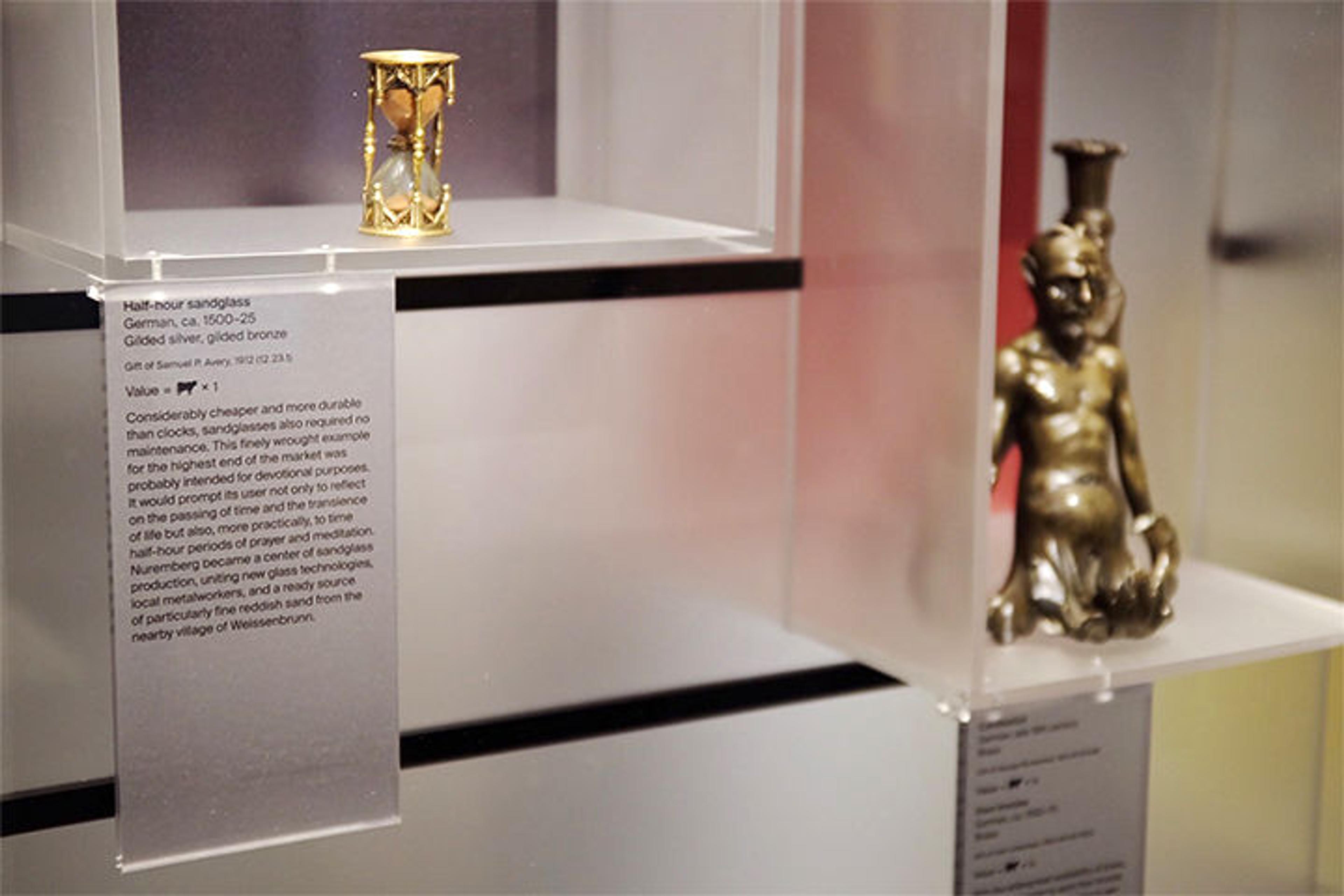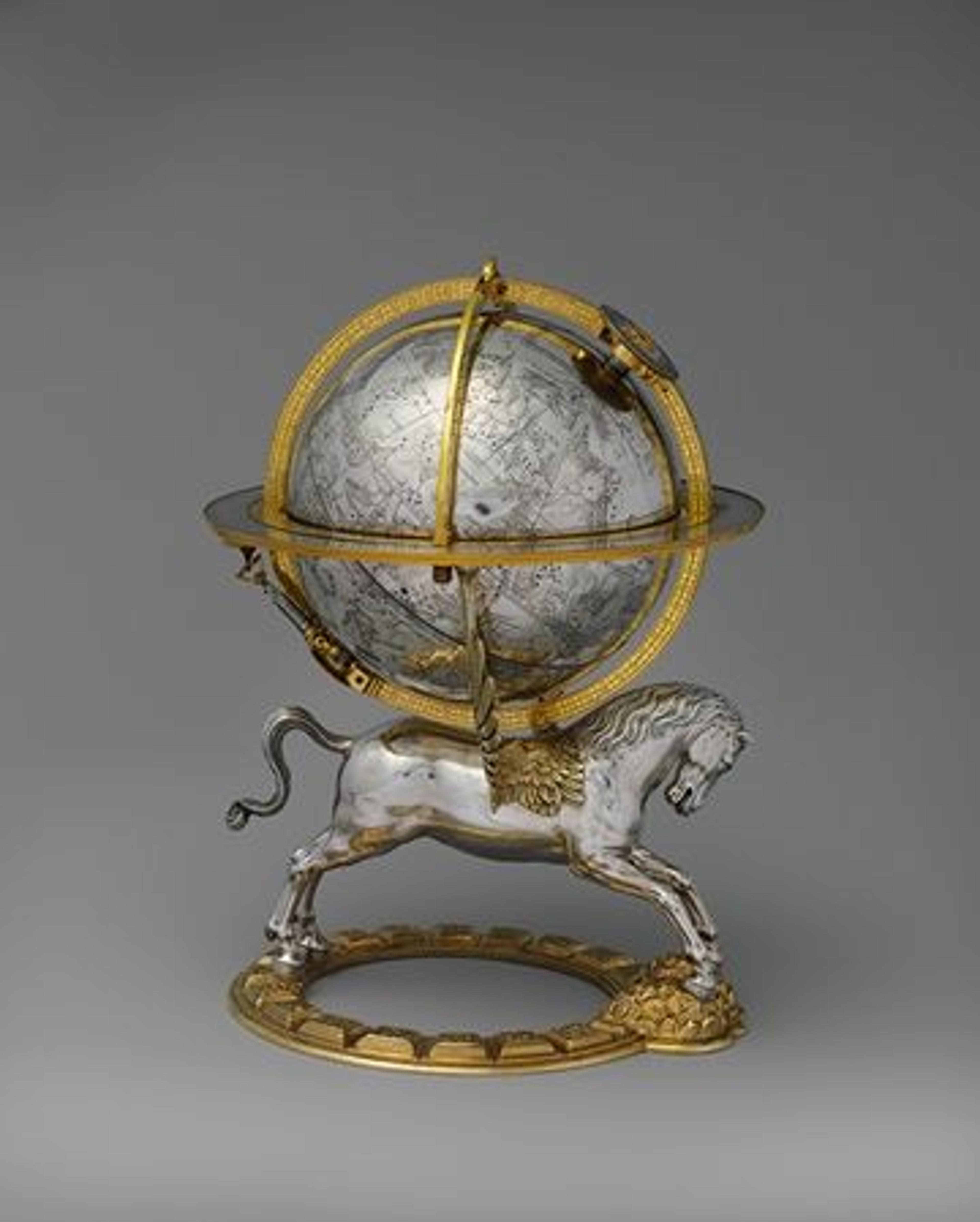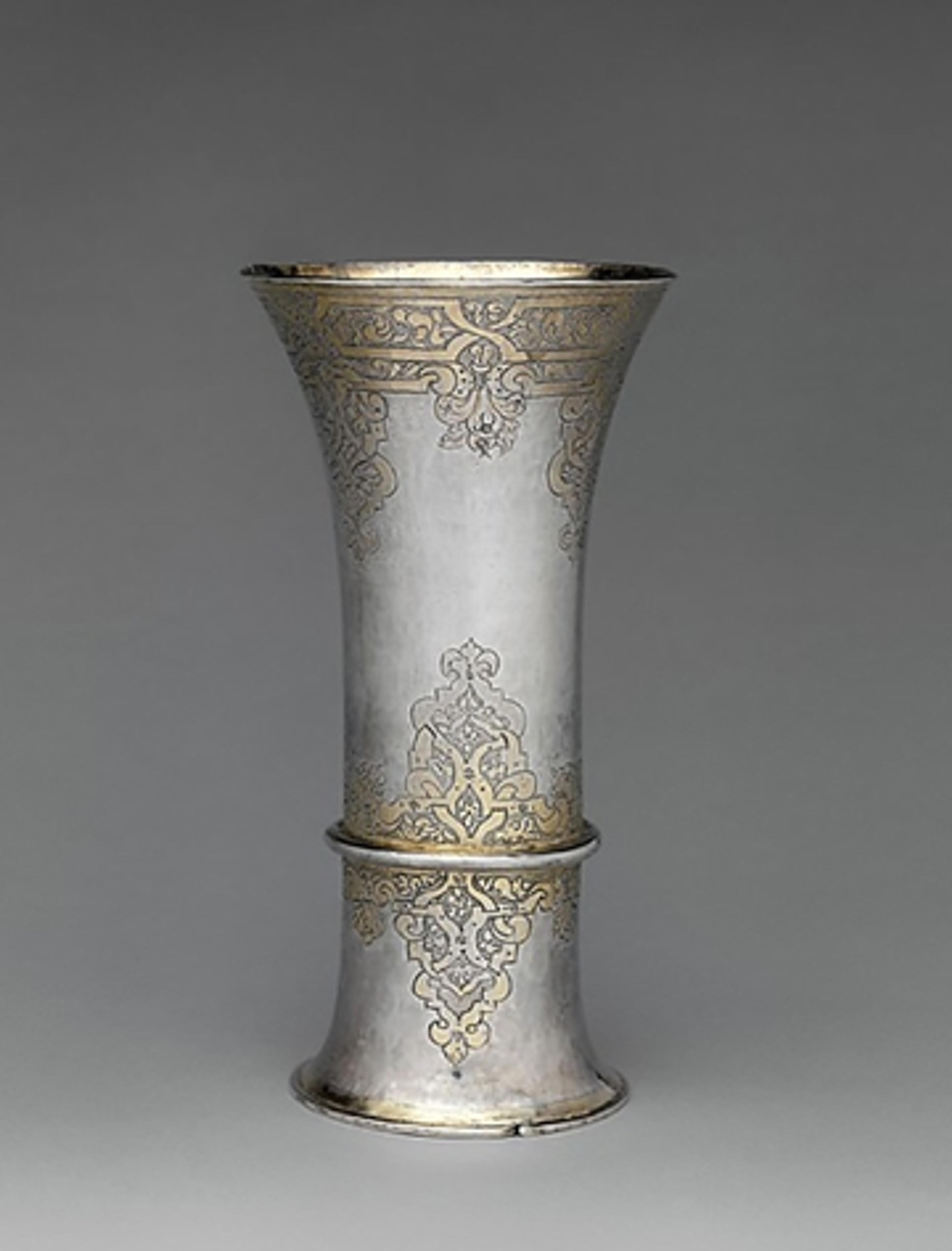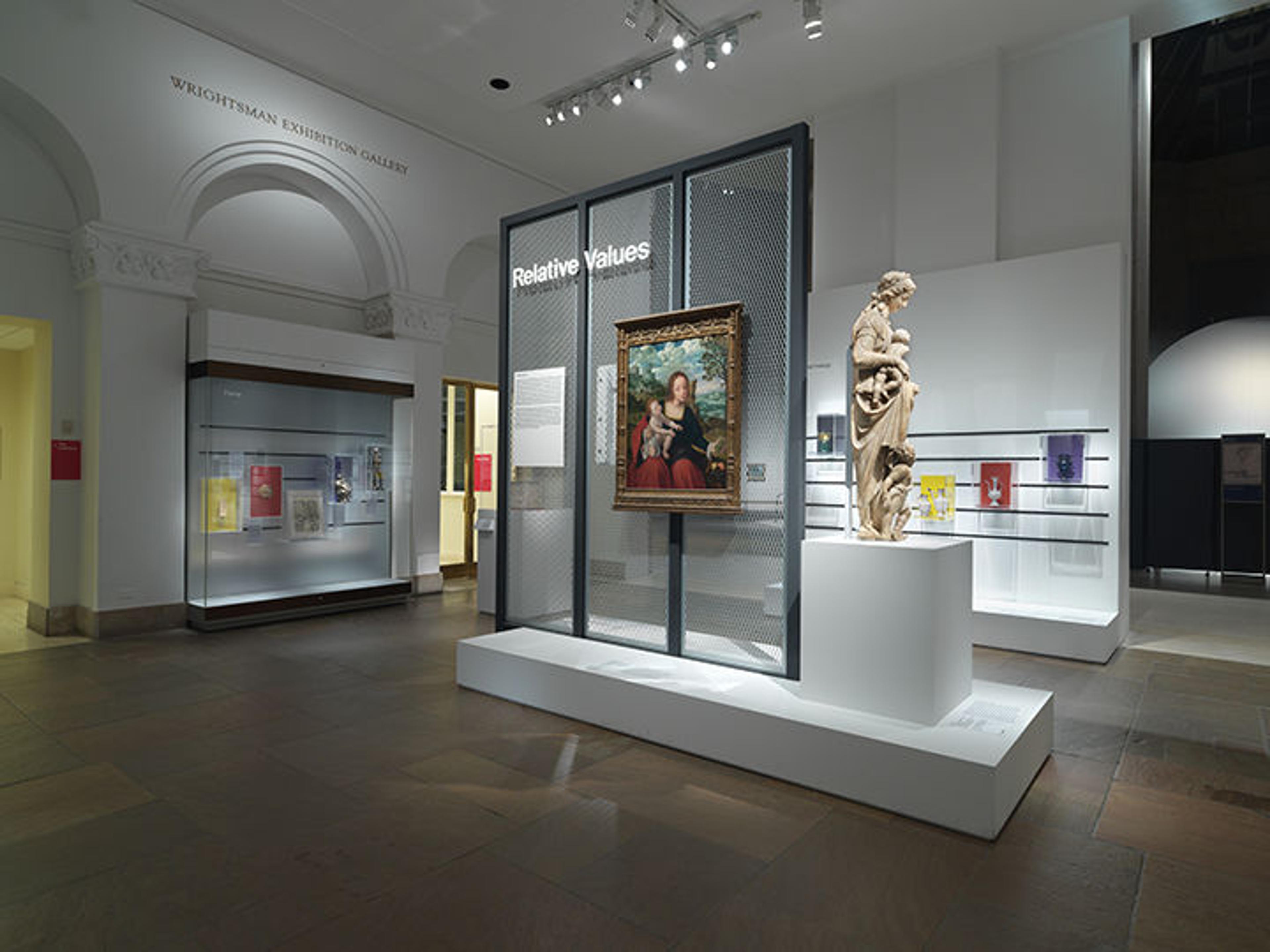
Half-hour sandglass, ca. 1500–25. German. Gilded silver, gilded bronze, 3 1/4 x 3 5/16 in. (8.3 x 8.4 cm). The Metropolitan Museum of Art, New York, Gift of Samuel P. Avery, 1912 (12.23.1). Value: one cow.
«Assuredly for the first time anywhere, labels for a group of objects at The Met currently display—in addition to objects' titles, creators' names, medium, date, and credit line—their worth, measured in units of cows!»
Although the facts seem fun, there is a serious message behind them. The labels accompany works in the exhibition Relative Values: The Cost of Art in the Northern Renaissance, on view in gallery 521 through spring 2019. The aim of the exhibition is to present 16th-century northern European applied-arts objects as they were perceived by their original audience when they were new—that is, when they were objects of contemporary art. Then, just as now, compelling design, intriguing iconography, and visceral appeal all played a role in affecting the desire for objects. However—again, similar to nowadays—all art was seen within a hierarchical filter of worth or, at least, cost, which was startlingly different to the hierarchies of today's art market.

Upper left: A Follower of Quentin Metsys, with the Master of the Liège Disciples at Emmaus (Netherlandish). The Rest on the Flight into Egypt (detail), ca. 1540. Oil on panel, 37 1/2 x 30 1/4 in. (95.3 x 76.8 cm). The Metropolitan Museum of Art, New York, The Friedsam Collection, Bequest of Michael Friedsam, 1931 (32.100.52). Value: five cows.Upper right: Saint Veronica (detail), ca. 1525. Flemish, probably Brussels. Wool, silk, gilded silver metal-wrapped threads (18–21 warps per in., 7–8 per cm), 68 x 51 in. (172.7 x 129.5 cm). The Metropolitan Museum of Art, New York, Bequest of George Blumenthal, 1941 (41.190.80). Value: 52 cows. Lower left: Charity (detail), mid-16th century. Circle of Jacques du Broeucq (ca. 1500–84). Northern French or Flemish. Alabaster, traces of gilding, 54 3/4 x 17 1/2 x 12 3/8 in. (139.1 x 44.5 x 31.4 cm). The Metropolitan Museum of Art, Purchase, Josephine Bay Paul and C. Michael Paul Foundation Inc. Gift and Charles Ulrick and Josephine Bay Foundation Inc. Gift, 1965 (65.110). Value: 40 cows. Lower right: Stove tile with Saint John the Evangelist and Samson, late 15th century. Buda Castle Workshop. Hungary. Earthenware, lead glaze, 18 11/16 x 15 7/16 x 9 3/4 in. (47.4 x 39.2 x 24.8 cm). The Metropolitan Museum of Art, New York, Gift of R. Thornton Wilson, in memory of Florence Ellsworth Wilson, 1954 (54.57). Value: 1/2 cow.
For example, any mid-16th-century observer would have recognized that acquiring a painting like Rest on the Flight into Egypt (upper left) would have been within reach of wealthier members of the professional classes. But a tapestry like Saint Veronica (upper right), made around the same time and place, would have been astronomically expensive—the sort of object most people could only ever hope to catch a glimpse of, perhaps in some palace or great church. Costing somewhere in-between the two would have been the alabaster sculpture of Charity (lower left). Considerably cheaper than all of these would have been the lead-glazed earthenware stove tile of a maiden presenting a shield depicting Saint John the Evangelist (lower right).

Exhibit in Relative Values with objects arranged in hierarchy of value
To a significant extent, these varying costs came down to the price of raw materials, and this is reflected in the exhibition's design, conceived by Michael Langley, an exhibition designer at The Met. The displays are tiered like musical notes across a stave, with objects made out of the priciest raw materials located at the top (the high notes), and those with the cheapest raw materials placed near the low notes at the bottom. The color scheme of the cases reiterates this hierarchy, echoing the 16th-century prices of dyestuffs. Black represents the costliest raw materials, harkening back to expensive logwood brought from North America, admired for achieving a rich, deep hue. Beneath black is pricey purple, which was realized in the 16th century using murex-shell from the Mediterranean. Next, middling madder red, followed by the cheaper yellow weld. Finally, beige signifies the cheapest, homespun, undyed cloth.
The placement of exhibits within the gallery reflects the cost of their raw materials, their intrinsic value. But market value is actually relative, and once we start taking into account 16th-century pricing, something rather interesting happens—and this is where the cows come in!

Left: Tankard, ca. 1585. Bohemian. Prague, Czech Republic. Silver, gilded silver, cast, embossed, engraved, and chased, rock crystal, garnets, 8 1/2 x 5 1/8 in., 25.6 oz. (21 x 13 cm, 726 g). The Metropolitan Museum of Art, New York, Purchase, Anna-Maria and Stephen Kellen Acquisitions Fund, 2017 (2017.231). Value: 158 cows. Right: Bottoms-up cup or stirrup cup (Sturzbecher), ca. 1550–70. Cologne, Germany. Salt-glazed stoneware, 15 1/16 in. (38.3 cm). The Metropolitan Museum of Art, New York, Gift of R. Thornton Wilson, in memory of Florence Ellsworth Wilson, 1954 (54.147.60). Value: 1/8 cow.
Scouring 16th-century documents—inventories, guild records, artists' contracts, and agreements—can reveal contemporaneous valuations and prices for objects comparable to the artworks on display in Relative Values, which includes tapestries, paintings, goldsmiths' work, ceramics, glassware, bronzes, carved and inlaid wooden objects, and stained glass. Because of the broad range of currencies used across Europe in the mid-16th century—from the likes of English shillings, through Dutch Carolus guilders, to Spanish ducados—this collection of prices is of limited use for comparisons. To make the values more relative across the different objects, I converted each currency into their equivalent weight of silver. This set a standard for original pricing to be compared across the objects.
To clarify further the "buying power" of each object in the mid-16th century, I converted those silver weights, in turn, into the number of milking cows they could have bought around 1550 in northern Europe. In 1550, the cost of one milking cow was relatively stable, at approximately 175 grams of silver. To give this further context, this was equivalent to 35 days' pay for a skilled craftsman or 59 days for an unskilled laborer working in London or Antwerp; 27 bushels of wheat in Ghent, Paris, or Vienna; or 5,350 loaves of rye bread in Brussels.
The cow valuations allow us to quantify how dramatic the hierarchy of value among different art objects in 16th-century northern Europe would have been. Using this system—along with data gleaned from the Antwerp paintings' market, records of Philip II's tapestry acquisitions in 1560s Brussels, contracts for alabaster sculptural projects, and tile purchase records—we can see that a painting like Rest on the Flight into Egypt in the exhibition, when for sale, would actually have cost the equivalent of five cows, the tapestry more than ten times that at 52 cows, the alabaster approximately 40 cows, and the tile a modest half a cow.
Left: Gerhard Emmoser (German, active 1556–84). Celestial globe with clockwork, 1579. Partially gilded silver, gilded brass (case); brass, steel (movement), 10 3/4 x 8 x 7 1/2 in. (27.3 x 20.3 x 19.1 cm); diameter of globe: 5 1/2 in. (14 cm). The Metropolitan Museum of Art, New York, Gift of J. Pierpont Morgan, 1917 (17.190.636). Value: 100 cows

Comparing the cost of raw materials for objects—their intrinsic value—with their equivalencies' pricing in cows—their extrinsic value—reveals some surprises. Although intrinsic and extrinsic values often correspond, sometimes the objects' extrinsic value could be radically different due to external factors, such as the cachet of natural materials imported from across the globe or the price of craftsmanship, which recognized and celebrated technical feats of virtuosity in creating these objects.
Bearing in mind these factors, we find that the kudos of owning a unique and then-modern technological instrument, or the admiration for scientific process—such as the conversion of cheap raw materials into gleaming, crystal-clear glass vessels—set a price on these objects often at odds with their intrinsic value. For example, around the year 1600, the (misplaced) belief that a small relief-carved plaque was the work of Albrecht Dürer, who was only relatively recently deceased and posthumously enjoying incredible celebrity among collectors, meant that the plaque's market price was artificially inflated far above the value of its raw materials, overtaking in cost the market price of bronze objects displayed nearby.
Even a worked silver beaker—worth only two-and-a-half cows purely in terms of silver content—would have cost the equivalent of as many as seven cows, thanks to the virtuosity of the decorative silver-working embellishing it.
Right: Attributed to Paulus Brölfft. Footed beaker, late 16th century. Hungarian. Nagyszeben. Silver, partially gilded, 7 15/16 x 3 1/4 in. (20.2 x 8.2 cm). The Metropolitan Museum of Art, New York, Gift of The Salgo Trust for Education, New York, in memory of Nicolas M. Salgo, 2010 (2010.110.4). Value: seven cows.

Relative Values brings together masterpieces both "high" and "low" from The Met collection, together with one superb loan. Presenting the works from this perspective, I hope, encourages us to look at even the most familiar objects with new eyes. By shrugging off the biases and associations imbued by centuries of collectors and ratified by traditional museum displays, we can appreciate them as their contemporaries saw them when they were brand-new additions to the art market. We can better admire the range of objects, from exceedingly expensive special commissions made for display in the rarefied atmosphere of wealthy collectors' Kunstkammern and curiosity cabinets; to more affordable objects made on speculation for sale to the mid-range market of successful, aspirational professionals and the modestly wealthy; to the cheapest rudimentary ceramics and punched tinwork, which made ownership of art accessible to even the poorest members of society.
By exploring intrinsic versus extrinsic value, we can touch on issues like the appreciation of the natural world and exploration, the kudos of having supported technological and scientific endeavors, enthrallment in mechanization and motorization, and the increasing fascination with celebrated artists and the cult of their authorship, set against examples of artistry made for both recreation and utility. The 16th century in northern Europe was a kaleidoscopic world, and Relative Values seeks to share some of that delight.
Related Link
Relative Values: The Cost of Art in the Northern Renaissance, on view at The Met Fifth Avenue through spring 2019
